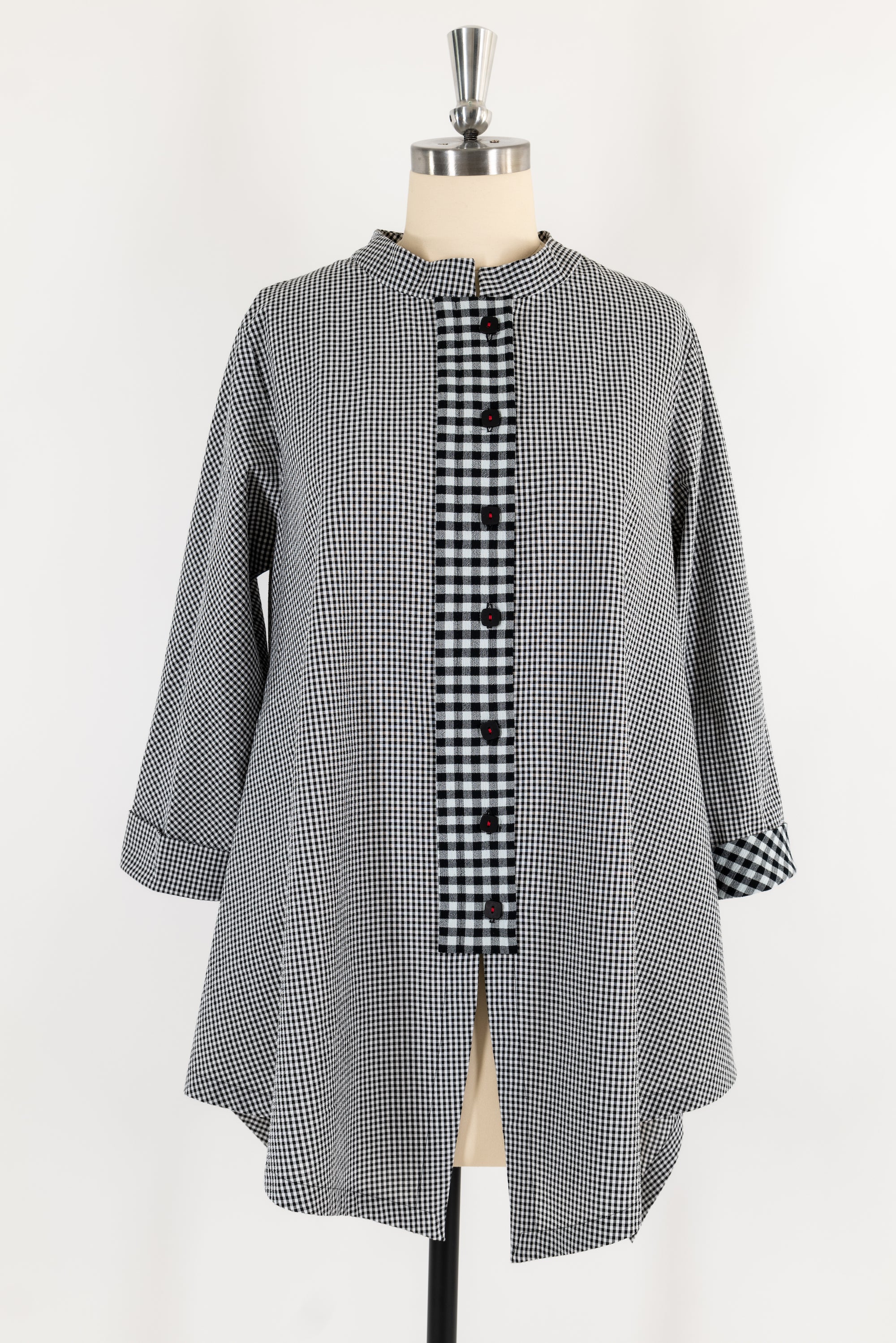Classic, cool, and on-trend, a cotton gingham check shirt is always a good warm weather wardrobe idea. Even better than one gingham check is when you can find a similar gingham check in a different scale or color. The base fabrics do not need to be identical but should be similar in weight.
Designed for a light/mid/shirting weight woven fabric it works in weights from hanky linen to flannels depending on the desired drape.

Pockets are included in the pattern and are optional. On the pattern envelope the white version is hanky linen and has no pockets to avoid show through. The sleeveless blue version is a linen/cotton blend with pockets.
You will notice in the photo that the wrong side of the fabric is visible from the longer back side. If this is bothersome visually, choose a solid color, a yarn-dyed plaid, a check or stripe, a light jacquard or a printed fabric without a lot of contrast between the front and back sides.
Note that the buttonholes are sewn off-set in the right front placket before the placket is stitched to the front and enclosed in the collar. The center front of the placket, lines up with the center front of the shirt, providing overlap for the buttons. The stitching line that holds the placket in place is offset on the right front and serves as a balance to the buttons, especially if stitched in a contrast color.
Fabric used: Mimi Japanese Cotton Seersucker for the main body, Right Bank Check for the contrast. French buttons stitched with red thread.
Originally the tunic was cut and stitched together in only the Mimi small checked seersucker. When I put it on the dress form to view I realized that a contrast check in the placket would make it more fun. By seeing a bit of the larger contrast check with the smaller it became clear that this was the way to go.
One cuff and the placket were carefully unstitched (using my favorite seam ripper). A new placket and new cuff were cut from the contrast check, stitched together and added. With red stitches in the buttons the shirt became just right. A few embroidery stitches may be added as well…
Changes I made to B6995:
- Cut the placket and one cuff out of the contrasting fabric.
- Cut the back center panel on the bias.
- Balanced the collar to be the same width on both sides so it ends at the center front (not enclosing the placket as noted in the directions).
- Added a simplified facing to both sides of the front. One inch finished width with a light interfacing.
- Stitched the shirt together (except for the placket and the hem, which is done at the very end).
- Finished the placket. After the long edge of the placket is stitched, pressed and turned right side out, slip-stitch the top and bottom edges closed).
- After buttonholes are added, stitched placket to the right front. Center of placket lines up with the center front which is where the two fronts butt together.






For my next version I’m going to eliminate the buttons and placket, straighten the center front at the lower edge, add seam allowances to make it a seam — with a simple facing leaving room for my head — and have a tunic/dress.
B6995 is a shirt/tunic that can be designed and re-designed endlessly. This gingham check version is the first of many iterations that I can imagine.
Happy sewing!





